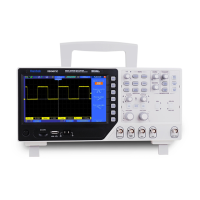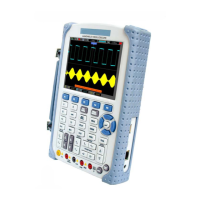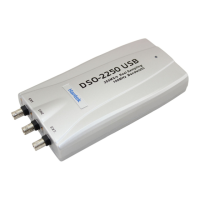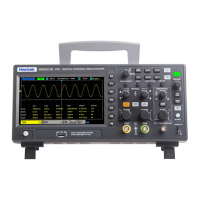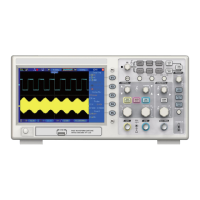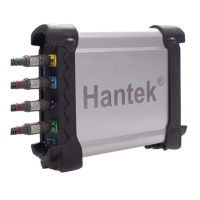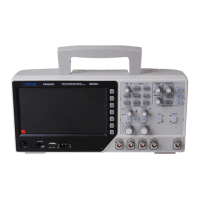
Do you have a question about the Hantek DSO4072 and is the answer not in the manual?
| Bandwidth | 70 MHz |
|---|---|
| Channels | 2 |
| Sample Rate | 1 GSa/s |
| Real-Time Sample Rate | 1 GSa/s |
| Power Supply | 100-240VAC, 50/60Hz |
| Math Functions | +, -, *, /, FFT |
| Memory Depth | 40 Kpts |
| Record Length | 40K |
| Display | 7 inch TFT LCD |
| Input Voltage Range | 400 V (DC + AC peak) |
| Vertical Sensitivity | 2 mV/div to 10 V/div |
| Timebase Range | 5 ns/div to 50 s/div |
| Time Base | 5 ns/div to 50 s/div |
| Trigger Modes | Edge, Pulse, Slope |
| Input Impedance | 1 MΩ ±2% |
| Interface | USB |
| Vertical Resolution | 8 bit |
Introduces the front panel and user interface of the digital oscilloscope.
Explains safety terms and symbols used on the product.
Provides guidance on the proper recycling and disposal of the device.
Introduces the front panel and user interface of the digital oscilloscope.
Guides through the basic functional checks of the oscilloscope.
Details the process of examining and compensating oscilloscope probes.
Explains the self-calibration routine for optimizing signal path accuracy.
Describes the function of various keys and buttons on the oscilloscope.
Explains the operation of multi-functional knobs and buttons.
Identifies and describes the various signal connectors on the oscilloscope panel.
Covers features like Autoset, saving, and recalling oscilloscope setups.
Details the factory default parameters for normal oscilloscope operation.
Explains controls for adjusting horizontal scale and position.
Details controls for displaying waveforms, adjusting scale, and input parameters.
Introduces concepts and types of triggers for stable waveform display.
Describes how to save and recall oscilloscope setups and waveforms.
Covers display settings like type, persistence, format, grid, and intensity.
Explains using scale and cursor for measurements and auto-measurements.
Details acquisition parameters like type, mode, averages, and memory depth.
Covers system utilities like firmware update, self-calibration, and settings.
Explains how to use the built-in help system for information.
Describes the function of fast action buttons like RUN/STOP and AUTOSET.
Details the waveform generator and optional power amplifier functions.
Demonstrates fast measurements of frequency, period, and amplitude.
Shows how to measure time and amplitude using cursors.
Illustrates displaying and reducing random noise in signals.
Explains capturing aperiodic signals like pulses and glitches.
Demonstrates phase differences using Lissajous patterns.
Shows how to trigger on specific pulse widths for accurate testing.
Explains triggering on video fields and lines for TV signal monitoring.
Demonstrates using slope trigger to observe rise and fall times.
Shows how to use overtime trigger for long pulse measurements.
Illustrates using math functions like addition for waveform analysis.
Explains measuring propagation delay in serial data circuits.
Provides solutions for common oscilloscope startup and display issues.
Lists detailed technical specifications for the oscilloscope.
Provides guidelines for general care and avoiding damage.
Details the procedure for cleaning the oscilloscope and probes.
